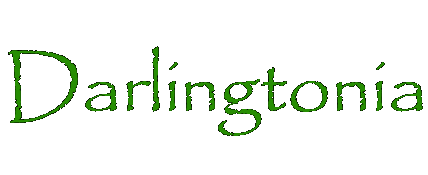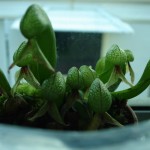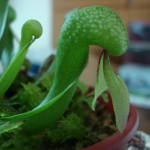WHAT ARE DARLINGTONIA
Darlingtonia or Cobra Lily is a unique carnivorous plant; unique because they actually look like snakes. The head of the Cobra Lily trap has a puffed hood that looks like a snake’s head with a fishtail appendage growing from the opening of the trap just like a snake’s tongue. Its tubular leaves grow in a gradual twisted fashion giving an impression of a snake crawling on the ground.
These plants have the ability to produce runners (stolons) where new plants emerge. The Cobra Lily plant is a monotypic genus, meaning there is only one species.
HOW DO THEY CAPTURE INSECTS
Insects are lured to the trap by its vibrant colors. Nectar produced at the fishtail appendage next to the opening of the trap below the hood lure insects near the entrance. Once an insect reach this area, the sunlight shining through the hood translucent windows draw the insect into the trap. Once inside the trap, the insect becomes confused by the light. It is too late now! The insect bounces around the tubular trap until it tumbles helplessly down into the lower portion of the interior pitcher.
Cobra Lilies do not produce enzymes to aid in digestion. However, water is secreted by the plant and the insect soon drowns. Bacteria and other micro-organisms help break down the insect prey and the plant reabsorbs the nutrient rich cocktail for growth.
WHERE CAN I FIND DARLINGTONIA
Cobra Lilies are found in Northern California and South Oregon in the United States. They can be found on hill slopes with serpentine rocks, where cool water moves slowly. They also grow in sphagnum bogs and grassy open sites that are sunny and wet. They can be found in elevation as high as 8,000 feet high.
The climate where they grow is Mediterranean with dry summers and wet winters. Summer nights are chilly.



